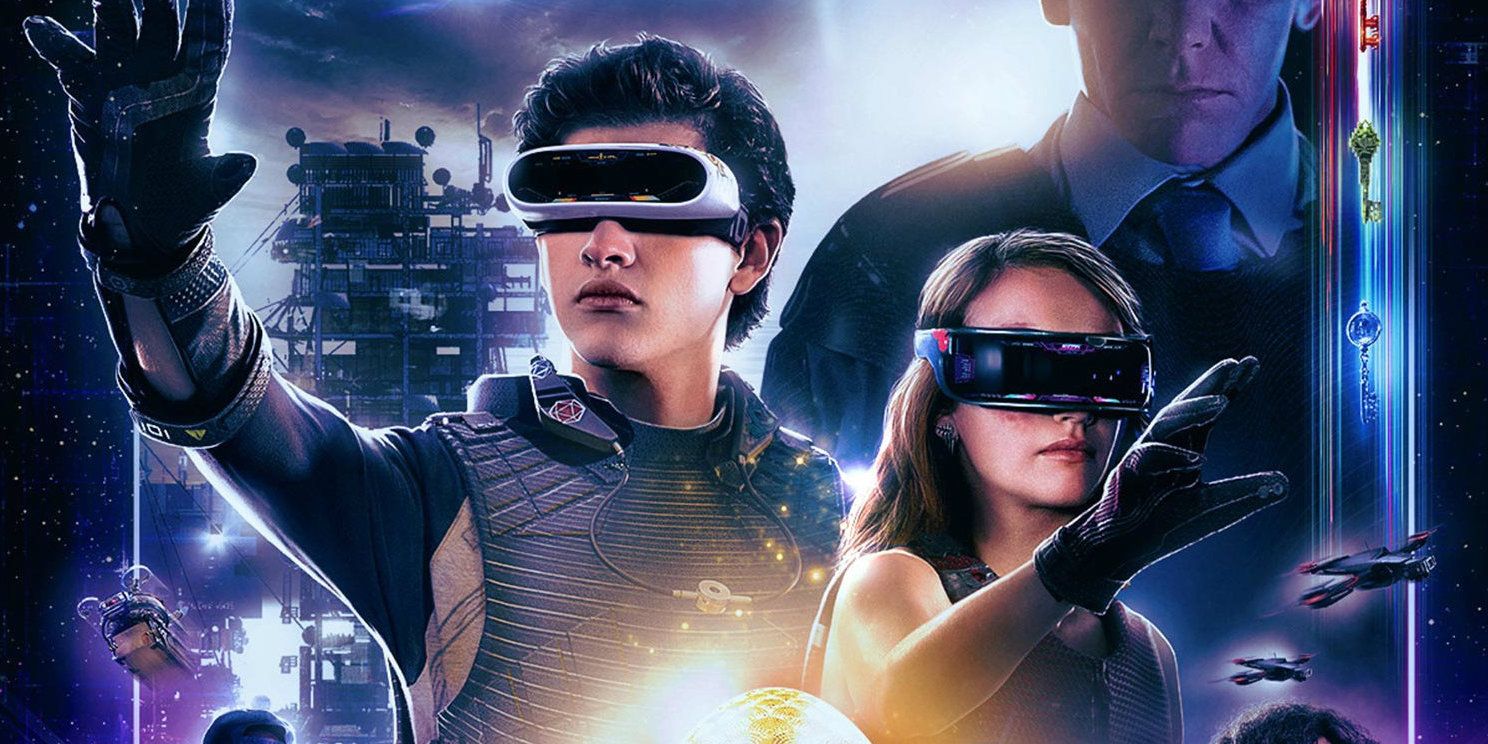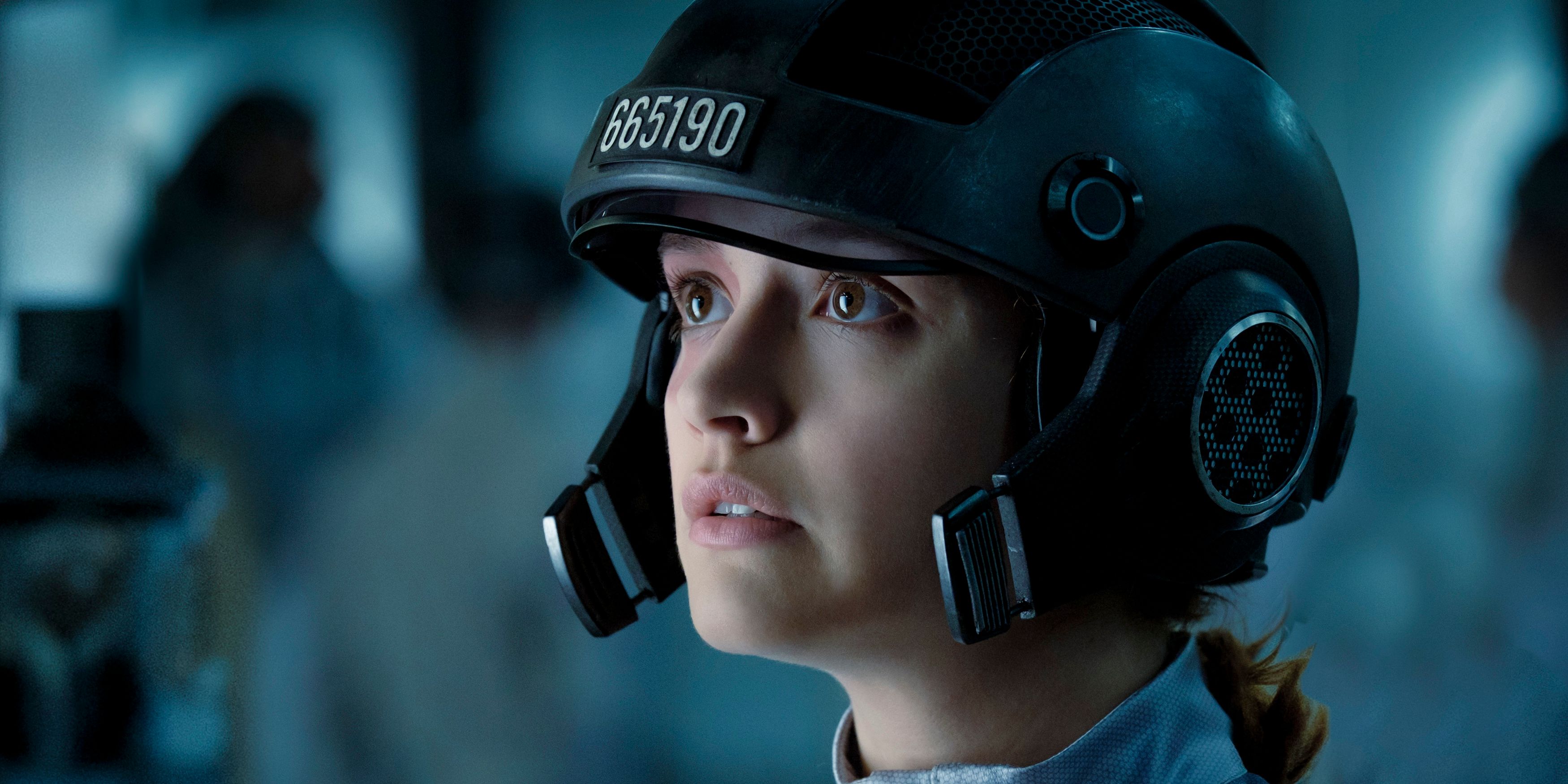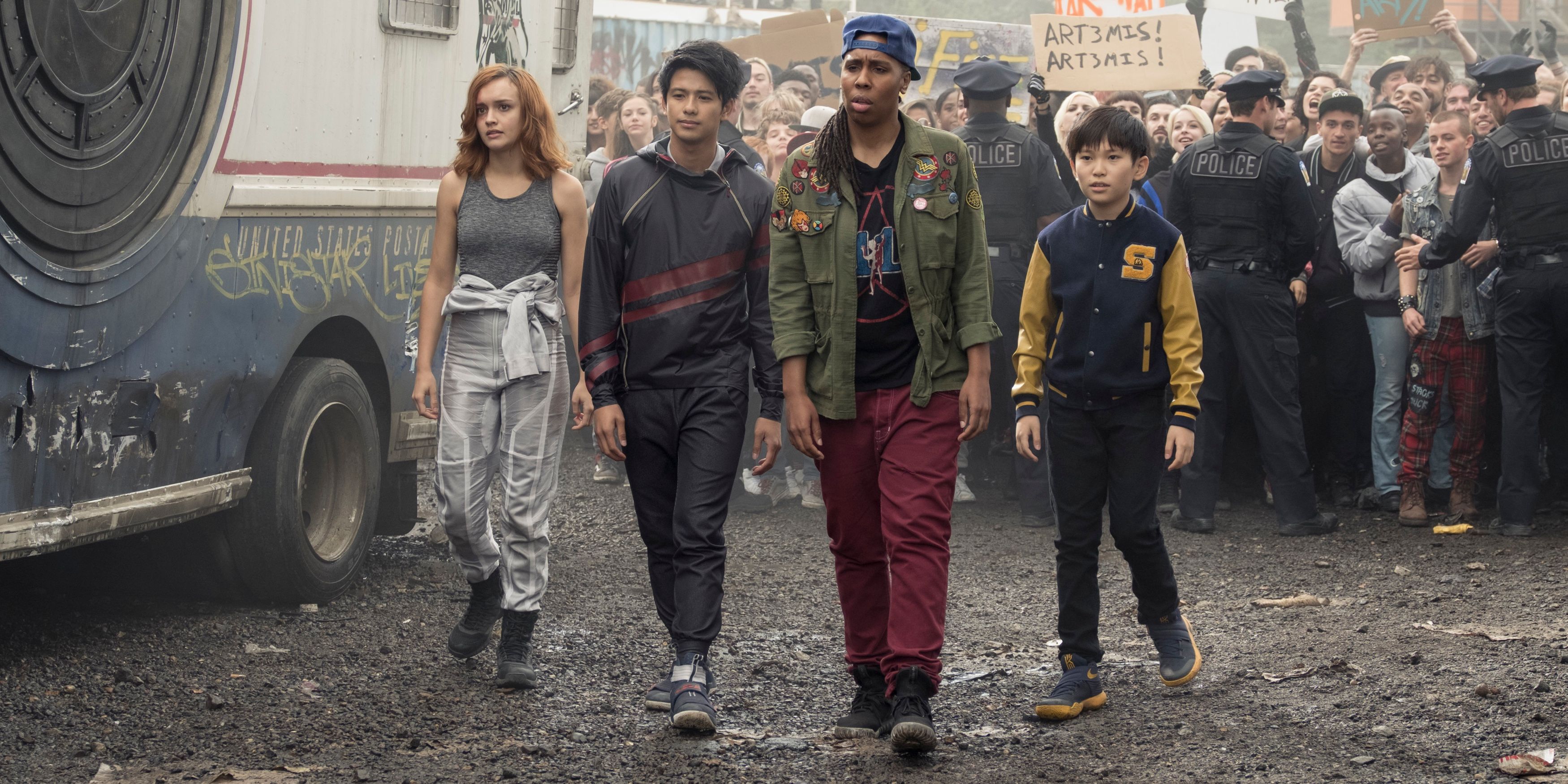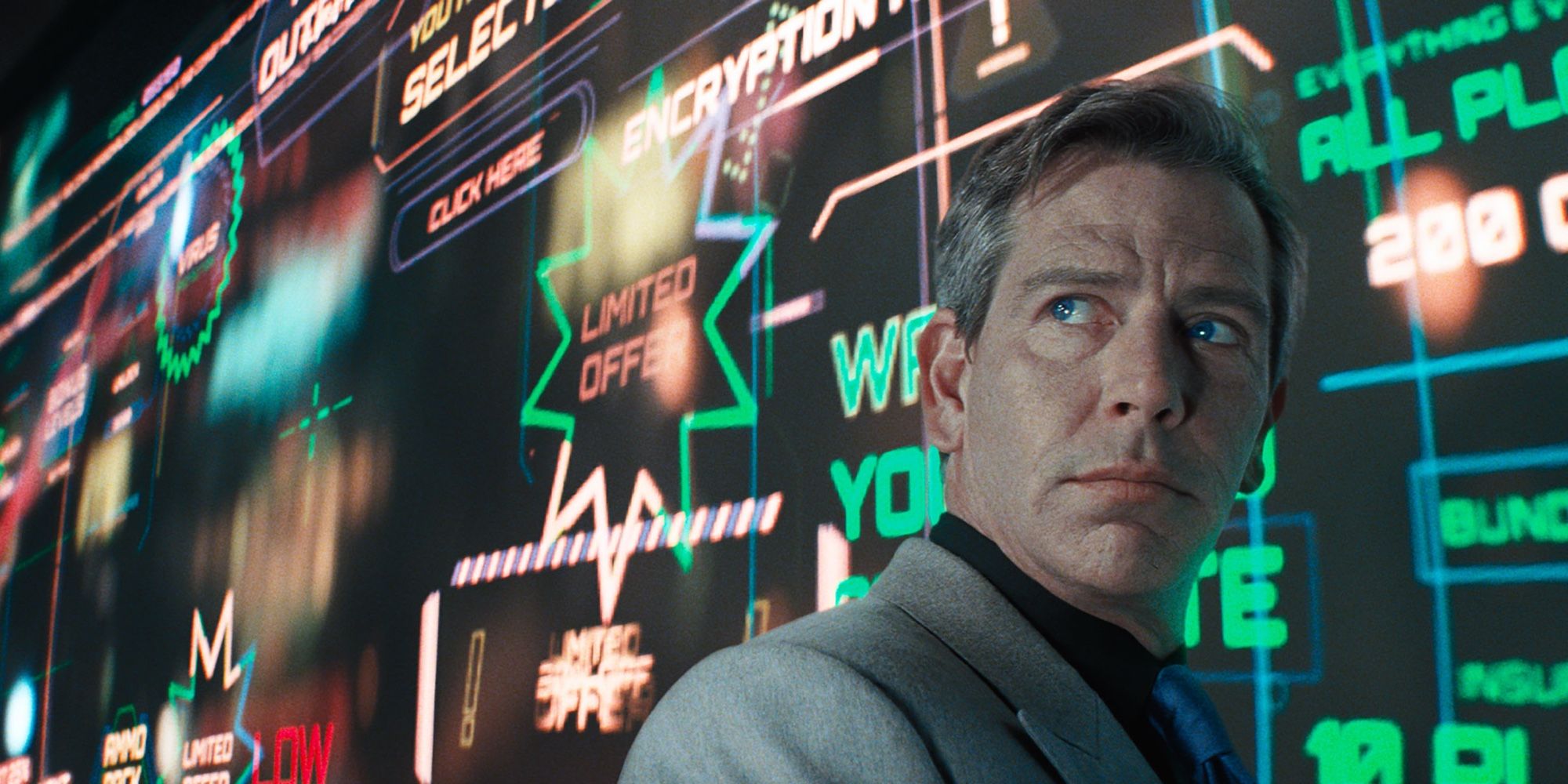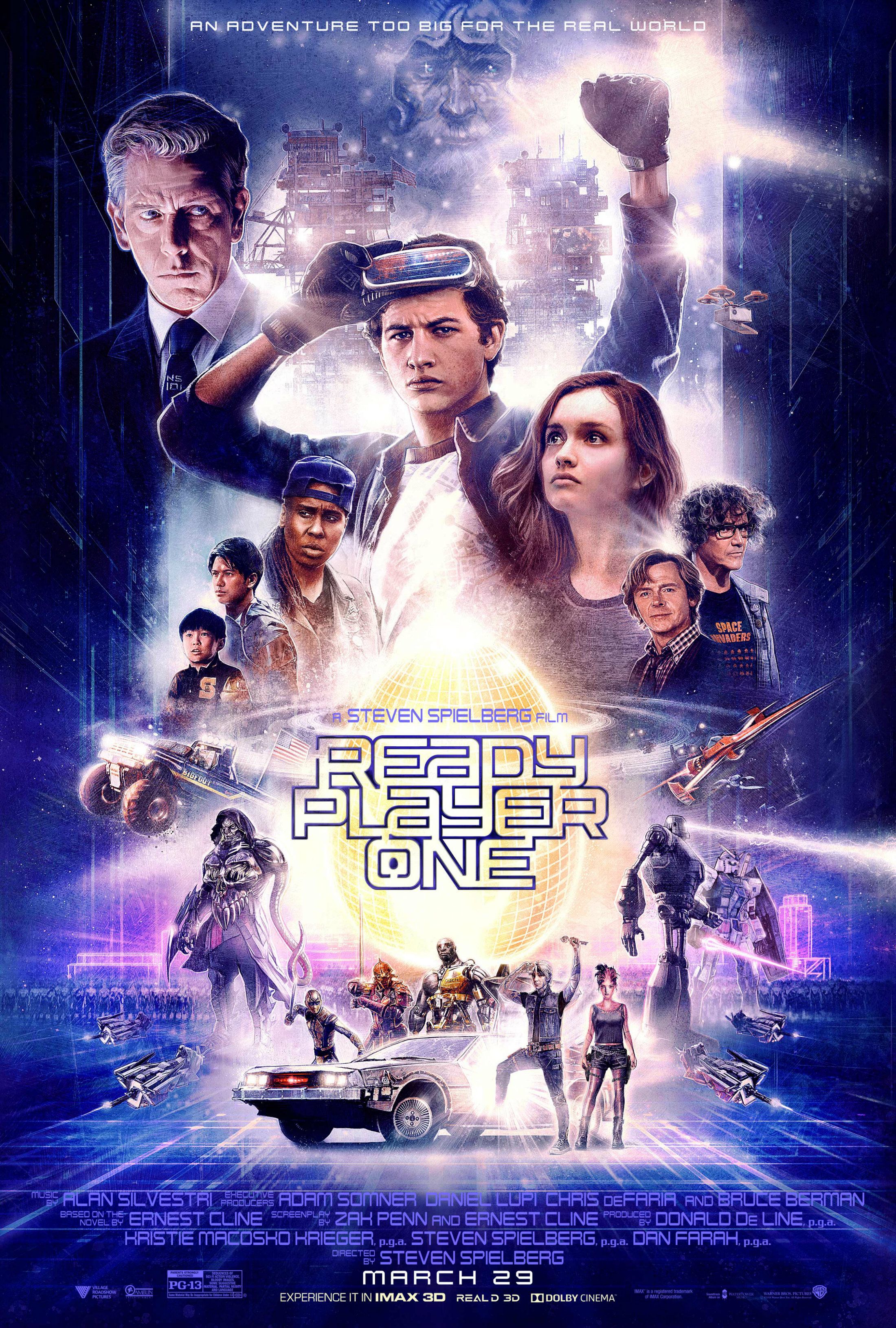An impressive work of technical showmanship, Ready Player One nevertheless falls short of recapturing that old-school Spielberg blockbuster magic.
Adapted from the novel by Ernest Cline, Ready Player One is another deep dive into the well of motion-capture filmmaking for legendary director Steven Spielberg. Like his mo-cap animated The Adventures of Tintin and mo-cap heavy The BFG adaptation before it, Ready Player One allows Spielberg to revel in the freedom that the technology affords him, when it comes to visualizing fantastical worlds and characters on the big screen. The film struggles in the same way that those movies did too, even as it attempts to infuse its pop literary source material and shiny visuals with a heavy dose of Spielbergian heart. An impressive work of technical showmanship, Ready Player One nevertheless falls short of recapturing that old-school Spielberg blockbuster magic.
RELATED: Ready Player One's Complete Easter Egg & Cameo Guide
Set in the year 2045, Ready Player One takes place in a dystopian future where much of the world is a mess due to issues such as overpopulation, environmental degradation, and rampant corporatization. People thus spend the vast majority of their time interacting and otherwise living in the OASIS, a virtual reality world created by the late James Halliday (Mark Rylance) and his partner Ogden Morrow (Simon Pegg). The OASIS is also heavily informed by Halliday's obsession with pop culture of the late 20th and early 21st century, and allows its users to create avatars of their own design - as they either compete in games with others, work for a living, or simply explore the limits of their imagination in a VR world.
Following his death, it is revealed that Halliday created one final game in the OASIS known as Anorak's Quest. The mission calls for players to track down three keys through a series of smaller quests, in order to find Halliday's last Easter Egg - an item that will grant them full control and ownership of the OASIS and its assets (real world and VR alike). When a young man named Wade Watts (Tye Sheridan), who goes by Parzival in the OASIS, becomes the first person to complete one of these three mini-quests, he becomes a celebrity in his own right and draws the attention of a famous player known as Art3mis (Olivia Cooke) in the process. Wade also inadvertently makes himself a target for the Innovative Online Industries CEO Nolan Sorrento (Ben Mendelsohn), who is determined to gain control of the OASIS at any cost.
The OASIS is the true star of Ready Player One and to their credit, Spielberg and his collaborators - including, his longtime cinematographer Janusz Kamiński and the many VFX artists of Industrial Light & Magic - do a bang-up job of bringing the VR setting to cinematic life. As he did with Adventures of Tintin in particular, Spielberg takes advantage of the mobility that comes with a digitally rendered universe populated by mo-cap characters; shooting Ready Player One's OASIS-based action sequences (most notably, those that involve finding Halliday's three keys) in ways that are physically impossible in the real world. Ready Player One is similarly top notch when it comes to world-building and succeeds in making the OASIS feel massive, even as the film explores but a fraction of the pop culture-informed VR landscapes that it has to offer. As for the much-discussed pop cultural elements themselves, they by and large work together to create a cohesive mythology that stands on its own, regardless of how familiar (or not familiar) viewers are with the pop culture being referenced.
Where Ready Player One struggles is with respect to its storyline and characters. The adapted screenplay by Cline and Zak Penn (The Avengers) changes and improves upon the plot of the original novel, yet still ends up being a frustratingly regressive take on the hero's journey narrative. Ready Player One similarly takes steps to make the character of Art3mis more fully-developed and complicated than the archetypical female love interest, but doesn't go far enough to break the mold in that respect. It feels as though a more deconstructive approach would have better served Ready Player One overall, from the way that it fleshes out its human players to the way that it explores what the OASIS means to them and how they choose to express themselves with their avatars. Instead of wrestling with this often messy relationship between pop culture and fandoms, Ready Player One goes for easy but over-simplified messages about corporate greed and the importance of not losing sight of what the real world has to offer.
That said, Spielberg does find a self-reflective quality in the James Halliday character, as Rylance once again thrives in a role that allows the director to meditate on his own legacy as a storyteller (similar to what Rylance and Spielberg did with The BFG). Ready Player One similarly begins to find it heart when it pairs Wade Watts - who, despite a fine performance by Sheridan, is something of a bland and two dimensional protagonist - together with his friends in the OASIS, including his good buddy Aech (Master of None's Lena Waithe) and the siblings Sho and Daito (Philip Zhao and Win Morisaki). The scenes in which this ragtag group of players join forces are easily the movie's best and the moments where Ready Player One comes closest to recapturing that old Spielberg sense of adventure, but with a modern twist (see how Wade is, refreshingly, the one white male in the group). Waithe is especially fun here and her character, to be frank, is much more charismatic than Wade, with a more intriguing backstory to boot.
Ready Player One further does a solid job of handling heavy amounts of voiceover exposition and maintains a steady pace throughout its first two-thirds, culminating with a set piece in the OASIS that allows Spielberg to playfully pay his respects to a fellow filmmaker and friend. The third act unfortunately drags by comparison as more of the action shifts to the real world and the threat posed by the soulless IOI. Ready Player One's vision of the future is simply less innovative than the OASIS, even with Wade's trailer park home in Columbus, Ohio (known as The Stacks) providing a visually striking backdrop. The IOI is likewise something of an overly cartoonish evil futuristic corporation, in spite of Mendelsohn's best efforts to make Sorrento a memorably offbeat villain in the same vein as his previous antagonist roles (most notably, Orson Krennic from Rogue One).
While Ready Player One had the potential to be a fascinating examination of Spielberg's place in pop culture history through the lens of a sci-fi/fantasy adventure, the final result is slick and technically daring yet makes for a hollow CGI-and-mo-cap fueled offering from the filmmaker. Fans of Cline's original book will probably enjoy Ready Player One the most - in spite of (and possibly even thanks to) the noticeable changes that it makes to its source novel - as will those who are new to the property, but have found the film's trailer marketing to be promising. As for those who didn't like the book and/or have been put off by the movie's previews: you might be better off revisiting some of Spielberg's classic movies and the pop culture that inspired Ready Player One instead, if you really want to be reminded of what made you love them in the first place.
TRAILER
Ready Player One is now playing in U.S. theaters nationwide. It is 140 minutes long and is rated PG-13 for sequences of sci-fi action violence, bloody images, some suggestive material, partial nudity and language.
Let us know what you thought of the film in the comments section!

